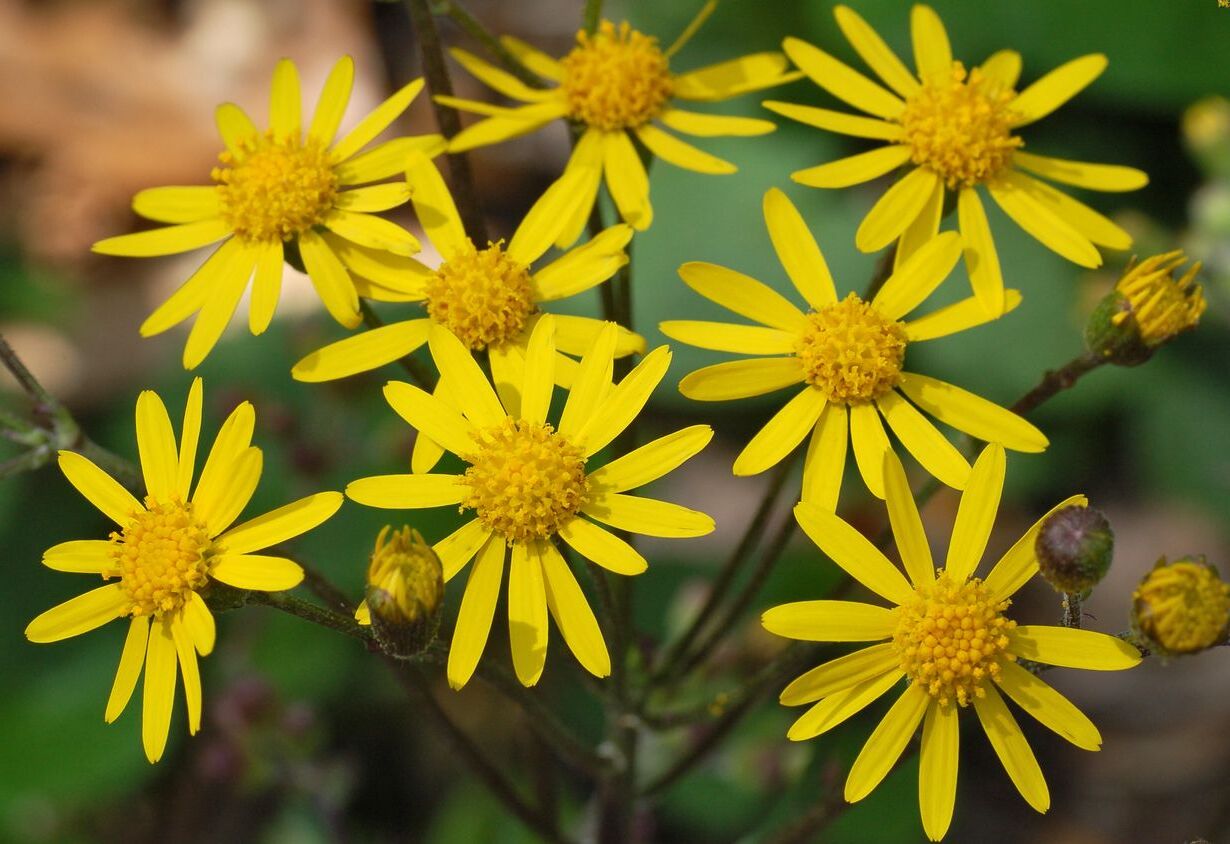
Golden ragwort, also known as Packera aurea, is a fascinating plant with a rich history and unique characteristics. Did you know that golden ragwort is not only beautiful but also beneficial to the environment? This perennial herb, native to North America, thrives in moist woodlands and along stream banks. Its bright yellow flowers bloom in early spring, providing an essential nectar source for pollinators like bees and butterflies. Additionally, golden ragwort has been used in traditional medicine for its purported healing properties. Whether you're a gardening enthusiast or a nature lover, learning about golden ragwort can deepen your appreciation for this resilient and vibrant plant.
What is Golden Ragwort?
Golden ragwort, also known as Packera aurea, is a perennial plant native to North America. This vibrant wildflower is often found in moist woodlands, meadows, and along stream banks. Its bright yellow flowers and heart-shaped leaves make it a favorite among gardeners and nature enthusiasts.
- Golden ragwort belongs to the Asteraceae family, which includes daisies and sunflowers.
- The plant typically blooms from April to June, providing early spring color.
- Golden ragwort can grow up to 2 feet tall, making it a striking addition to any garden.
- The leaves are heart-shaped at the base and become more elongated as they ascend the stem.
- This plant is often used in native plant gardens due to its hardiness and low maintenance.
Habitat and Growing Conditions
Golden ragwort thrives in specific environments that cater to its growth needs. Understanding these conditions can help in cultivating this plant successfully.
- It prefers moist, well-drained soil and can often be found near streams and wetlands.
- Golden ragwort can tolerate partial to full shade, making it ideal for woodland gardens.
- The plant is native to the eastern United States, ranging from Maine to Georgia and west to Minnesota.
- It can also grow in rocky or sandy soils, showing its adaptability.
- Golden ragwort is often found in floodplain forests, where it benefits from periodic flooding.
Ecological Importance
Golden ragwort plays a significant role in its ecosystem, supporting various forms of wildlife and contributing to biodiversity.
- The flowers attract pollinators such as bees, butterflies, and other insects.
- Its foliage provides habitat and food for caterpillars and other herbivorous insects.
- Golden ragwort can help prevent soil erosion due to its extensive root system.
- The plant is a host for several moth species, including the Ragwort Seed Fly.
- It contributes to the biodiversity of woodland and wetland areas.
Medicinal and Cultural Uses
Historically, golden ragwort has been used for various medicinal purposes by indigenous peoples and early settlers.
- Native Americans used the plant to treat respiratory ailments and other health issues.
- It was also used as a diuretic and to treat kidney problems.
- Some cultures believed golden ragwort had protective properties and used it in rituals.
- The plant has been used in folk medicine to treat wounds and skin conditions.
- Despite its historical uses, modern medicine does not widely recognize golden ragwort for its medicinal properties.
Gardening and Landscaping
Golden ragwort can be a valuable addition to gardens and landscapes, offering both aesthetic and ecological benefits.
- It is often used in rain gardens due to its preference for moist conditions.
- The plant can be propagated by seed or division, making it easy to cultivate.
- Golden ragwort is deer-resistant, which is beneficial for gardeners in areas with high deer populations.
- It can be used as a ground cover in shady areas, helping to suppress weeds.
- The bright yellow flowers add a pop of color to spring gardens.
Potential Issues and Management
While golden ragwort is generally low-maintenance, it can face some challenges that gardeners should be aware of.
- The plant can be susceptible to powdery mildew, especially in humid conditions.
- Slugs and snails may feed on the foliage, causing damage.
- Golden ragwort can spread aggressively in ideal conditions, potentially becoming invasive.
- Regular deadheading can help control its spread and encourage more blooms.
- It is important to monitor for pests and diseases to maintain plant health.
Interesting Facts
Golden ragwort has some unique characteristics and interesting tidbits that make it a fascinating plant.
- The plant's name, "ragwort," comes from the ragged appearance of its leaves.
- Golden ragwort is sometimes called "butterweed" due to its bright yellow flowers.
- The plant can be used to create natural dyes, producing shades of yellow and green.
- Despite its beauty, golden ragwort is considered toxic to livestock, particularly horses and cattle.
Golden Ragwort: A Hidden Gem
Golden ragwort, with its vibrant yellow flowers, is more than just a pretty face. This resilient plant thrives in various environments, from woodlands to wetlands. Its ability to attract pollinators like bees and butterflies makes it a valuable addition to any garden. Beyond its beauty, golden ragwort has medicinal properties, historically used to treat ailments like colds and wounds.
Despite its benefits, it's essential to handle this plant with care. Some parts can be toxic if ingested, so keeping it away from pets and children is wise. Whether you're a seasoned gardener or a nature enthusiast, golden ragwort offers a fascinating glimpse into the world of native plants. Embrace its charm and let it brighten up your outdoor space while supporting local wildlife. Happy gardening!
Was this page helpful?
Our commitment to delivering trustworthy and engaging content is at the heart of what we do. Each fact on our site is contributed by real users like you, bringing a wealth of diverse insights and information. To ensure the highest standards of accuracy and reliability, our dedicated editors meticulously review each submission. This process guarantees that the facts we share are not only fascinating but also credible. Trust in our commitment to quality and authenticity as you explore and learn with us.
